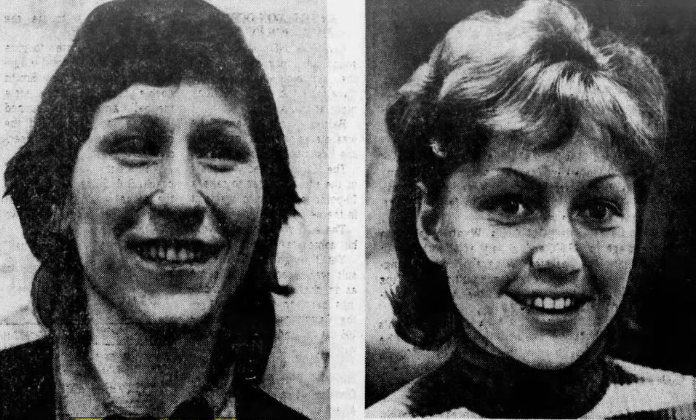
Nine countries were represented in the 16-player field of the Lady Gotham Classic, but only one of those nations made news for its inclusion. Everyone wanted to get a look at 24-year-old Olga Morozova, the first-ever top-tenner from the Soviet Union. The New York draw was particularly tantalizing: Morozova would open against her 19-year-old traveling companion Marina Kroschina. Kroschina qualified for the event by beating the previous week’s surprise star, Marita Redondo.
It was hardly the first meeting between the two women. Morozova and Kroschina had already played seven times, including once just a few days earlier, for a place in the Akron final. (Morozova won, then fell victim to Chris Evert.) They had even faced off before in the New York metro area. Both women had made the trip to the 1972 US Open, and they met in the final of a small warm-up event in New Jersey. The older woman won that one, 6-2, 6-7, 7-5, and she led the overall series, six matches to one.
Neither that matchup nor the Soviet trip to Forest Hills satisfied American interest in the visitors. Morozova was good for a feature story at every stop on the USLTA circuit. In Akron, she told a reporter that she missed her engineering-student husband back in Moscow, she liked Boston, she didn’t care for New York, she wished she had more time to see the sights of Akron, and she loved Coca-Cola. “It is the real thing,” she said.
Nor was the larger stage of New York City too big for her. Just a few days earlier, gold-medal-winning gymnast Olga Korbut had wowed the gallery at Madison Square Garden. With a temporary tennis court installed, she would compete at the same venue. Alas, there was nothing Korbut-like about her performance on the day.
Perhaps Olga’s homesickness explained her let-down on March 29th at the Lady Gotham. Kroschina, the 1971 Wimbledon girls’ champion, took advantage of the slow, high-bouncing surface at the Garden to negate her friend’s serve-and-volley game, winning 6-4, 4-6, 6-4.
Morozova on a happier day, at Wimbledon in 1974
Both women were disappointed that the draw had paired them up so early. A tournament official told the New York Times that it was an “oversight.” More likely–I hope–it was just bad luck. Morozova was the third seed, Kroschina was a qualifier; there was a one-in-twelve chance that a random draw would generate an all-Soviet first-rounder. At least they couldn’t complain about lost prize money. Every penny they earned went back to their federation.
Kroschina never lived up to her promise. When she wasn’t traveling for tennis, she went to school to become a sportswriter, and she ultimately spent more of her life as a journalist than she did as a competitive athlete. Morozova, on the other hand, showed the way for later generations of Russian tennis standouts. She reached the final at both Roland Garros and Wimbledon in 1974, and partnering Evert in Paris, she won the Soviet Union’s first grand slam title.
Olga was optimistic about US-Soviet relations: “I think in the future our two countries will become very good friends. I hope.” The USSR didn’t last long enough to realize her forecast. But her goals for Russian tennis were overwhelmingly satisfied. A half-century later, all-Russian first-round meetings are no longer news. Morozova’s countrywomen are so numerous on tour that it wouldn’t even occur to them to complain.
* * *
This post is part of my series about the 1973 season, Battles, Boycotts, and Breakouts. Keep up with the project by checking the TennisAbstract.com front page, which shows an up-to-date Table of Contents after I post each installment.
You can also subscribe to the blog to receive each new post by email: